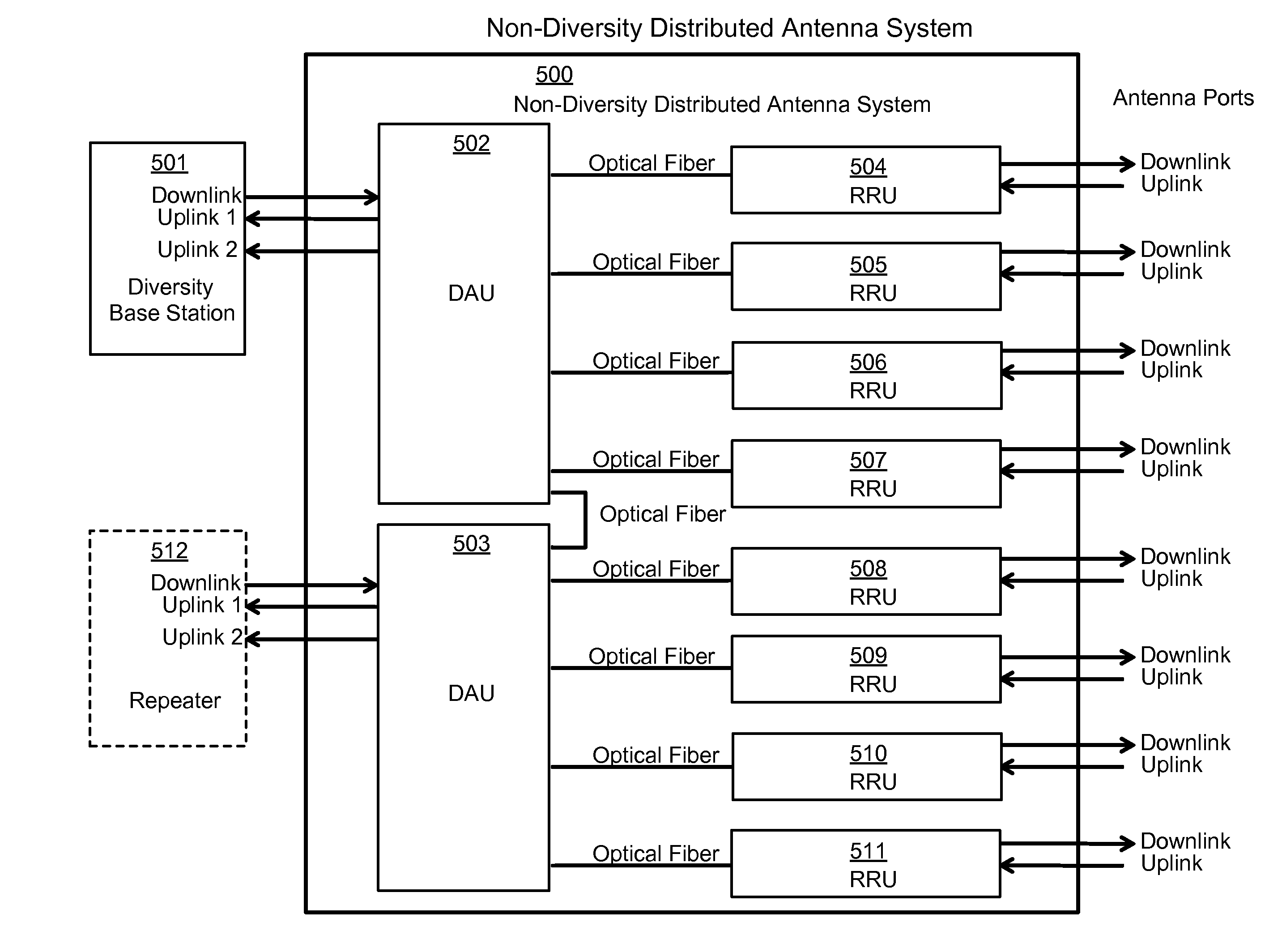Software configurable distributed antenna system and method for reducing uplink noise
- Summary
- Abstract
- Description
- Claims
- Application Information
AI Technical Summary
Benefits of technology
Problems solved by technology
Method used
Image
Examples
Embodiment Construction
[0035]A DAS may be configured to employ uplink diversity, where each remote antenna unit supports two uplink receive antennas. In such a case, two separate uplink signal paths are provided from each remote antenna unit to the host unit and onward to the base station uplink receive antenna ports. A DAS that has two receive antennas deployed at each remote antenna unit location may provide enhanced system performance. However, the additional physical space and costs associated with providing uplink diversity antennas and diversity signal processing at the remote antenna units may not be practical for some outdoor and indoor DAS deployments. Some DAS solutions require deployment of a separate optical fiber per remote antenna unit to support uplink diversity, which may further increase capital and operational costs. For some digital-over-fiber systems, the need to provide a second uplink path dramatically increases the required upstream data transport rate. The required upstream data tr...
PUM
 Login to View More
Login to View More Abstract
Description
Claims
Application Information
 Login to View More
Login to View More - R&D
- Intellectual Property
- Life Sciences
- Materials
- Tech Scout
- Unparalleled Data Quality
- Higher Quality Content
- 60% Fewer Hallucinations
Browse by: Latest US Patents, China's latest patents, Technical Efficacy Thesaurus, Application Domain, Technology Topic, Popular Technical Reports.
© 2025 PatSnap. All rights reserved.Legal|Privacy policy|Modern Slavery Act Transparency Statement|Sitemap|About US| Contact US: help@patsnap.com



